COLUMN
Dec. 27 2018
Surviving Hokkaido Winter: Top Tips for the Everyday!
・
For the majority of winter in Hokkaido, the temperature stays below 5 degrees, and naturally makes the outside a natural freezer. The roads become ice rinks and the wind blows straight through your clothes. If you don’t have space in your fridge, the balcony becomes your second fridge. Through various tricks and methods, the people of Hokkaido have learned to overcome these difficulties. However, instead of looking at it as a minus, these aspects are simply another unique trait of living in Hokkaido. Now let’s take a look at the snowy winter life and learn the top tips in surviving in the snow country!
1.
Heading out? Make sure to empty out the tap!

(The slogan reads “When there’s no water, our lives are put on freeze, so to prevent frozen pipes, remove water please!”)
Once December rolls around, as you walk around outside you’ll often see “-4℃” posted all over town. This temperature represents degree in which water in the pipes will freeze, even if they are built within the house. Especially for households that leave for a long time and the water is sitting in the pipes, there is a high chance that the water expanding from being frozen will burst the pipes. Not only is cost for repair and maintenance extremely expensive, people will be left without access to water for significant amount of time. Therefore, in order to prevent such accidents, the Sapporo Water Bureau will begin campaigns to remind people of “mizunuki” or the process of emptying still water from pipes when leaving the house for more than 2 to 3 days.
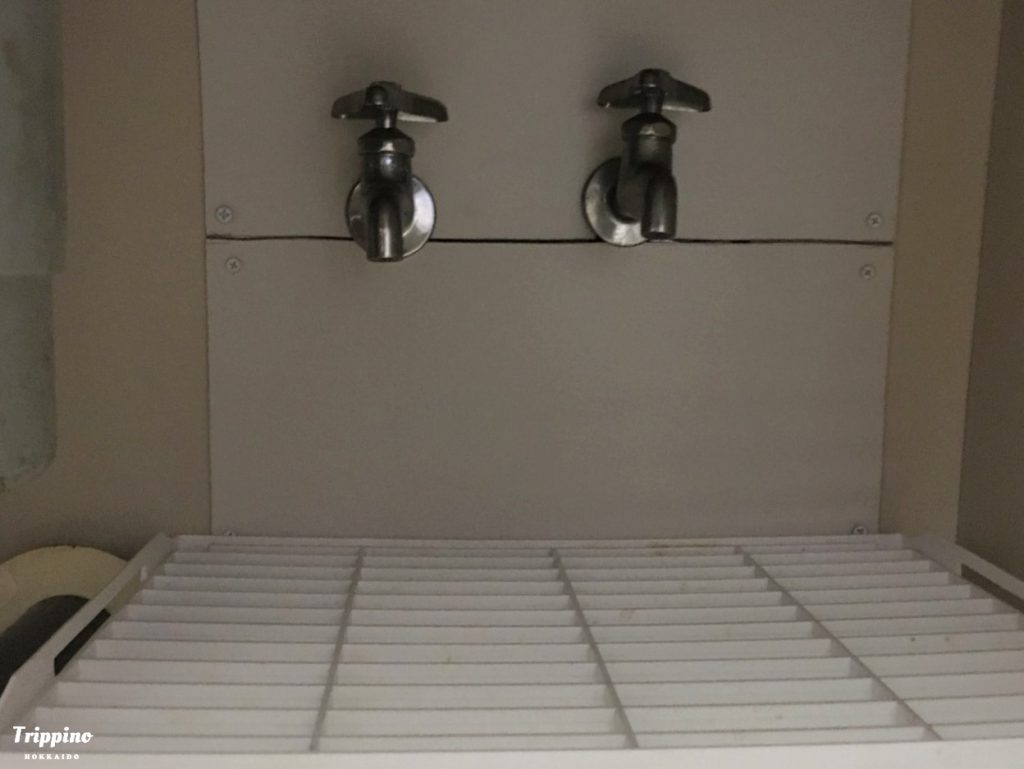
(The picture here shows the faucet for draining water under the sink)
Any faucet in the home that is connected to the tap water pipeline needs to be emptied. Not to worry though, removing water is not a difficult process. First, the water source for the house have to be closed to prevent more water from entering. Then water in pipes below sinks, washing machines, toilets, etc must be emptied. In the case of older houses where the insulation isn’t as good, I have had friends who returned home to a frozen toilet bowl, and they had to stand in front of the toilet with a space heater to thaw their toilet!
2.
Laundry humidifier and all-purpose hooks
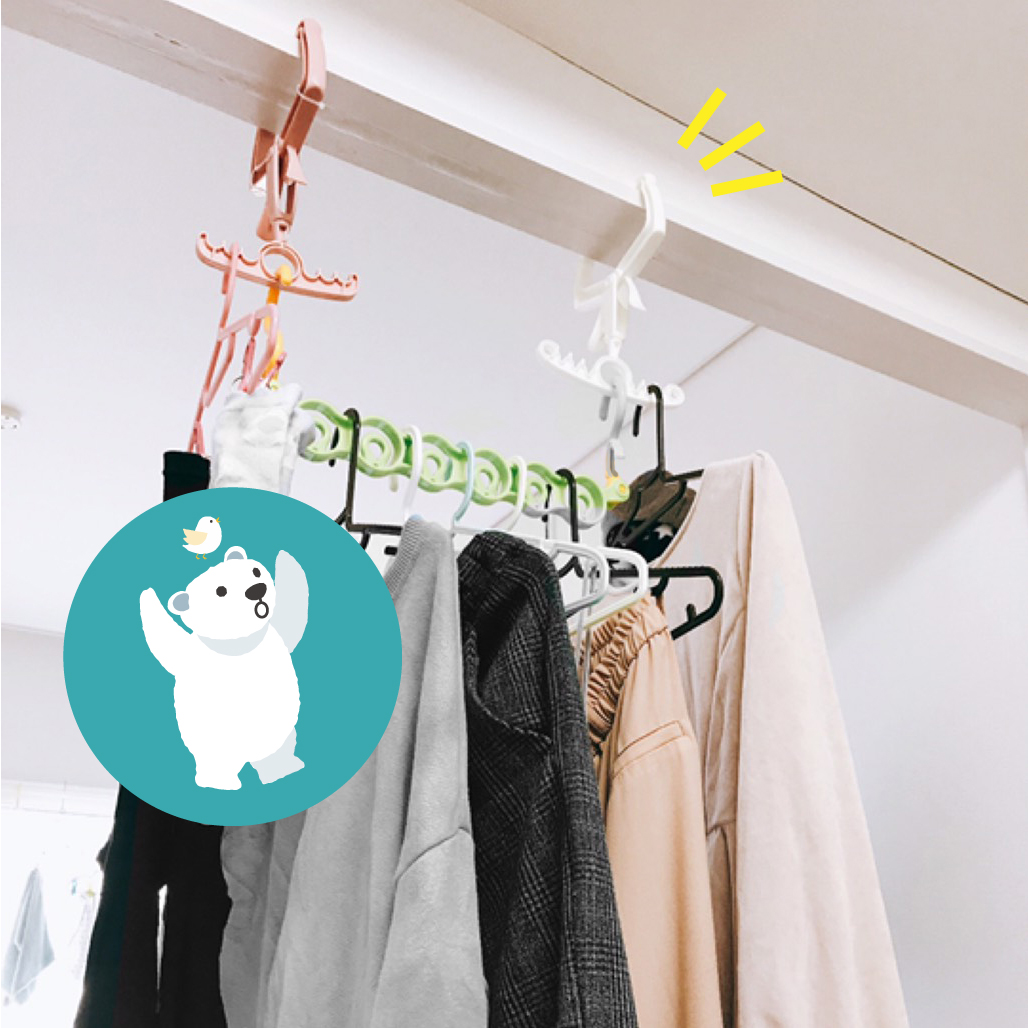
In winter, if you put your clothes outside to dry, you’ll be pleasantly surprised to receive a laundry popsicle instead of dried clothes (duh!) A little trick people of Hokkaido use is the “kamoi”, or overhead beams in many houses that separate the rooms. Using the giant laundry clips and a pole from the 100 yen store, a set of two can be used to dry up to five to six pieces of clothing at a time! Also, and an added benefit, the laundry double as humidifiers! In winter, where the humidity is already quite low in Hokkaido, with the heaters constantly running, the indoors can become super dry and may cause some static shocks! Luckily, with laundry hanging in the room, it’ll dry up fast with the heater on and keep the room at a comfortable humidity. (It must be hard to believe for people from high humidity regions, where never-drying laundry is an absolute nightmare!)
3.
Double windows and condensation strips
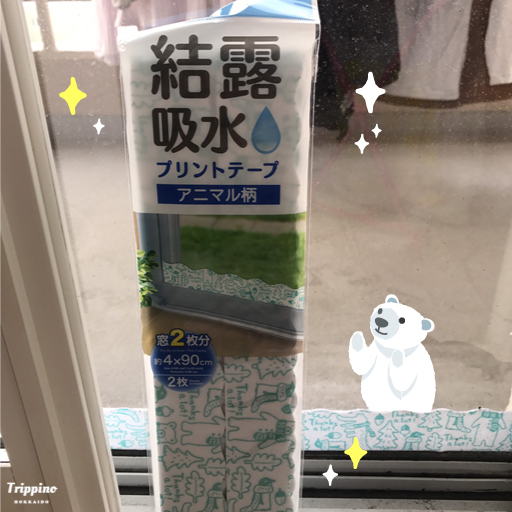
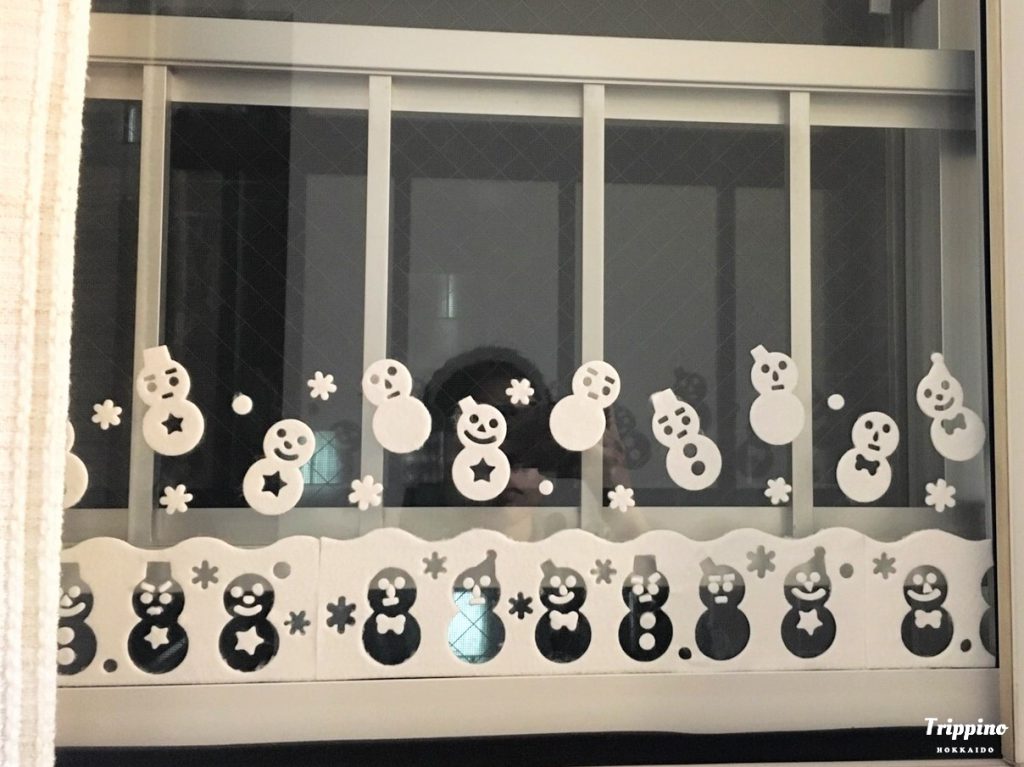
(There are plenty of cute designs to choose from!)
During the coldest parts of the season in January and February, even in Sapporo, it is normal for the temperature not to go above zero degrees even during the day. For this, it is essential for the windows to be double layered to insulated the houses with an extra layer of air. This double line of defense is essential for most modern homes and is quite commonplace in Hokkaido. However, due to the huge temperature difference between the outside and inside window, the area in between is prone to condensation, resulting in mold buildup at the lower edge of the window. Therefore, in addition to regular wiping of the window, many people will also put on a condensation strip to absorb the water. While it make purely look decorational, it plays an important role to the everyday to the people of Hokkaido.
4.
Changing to snow tires
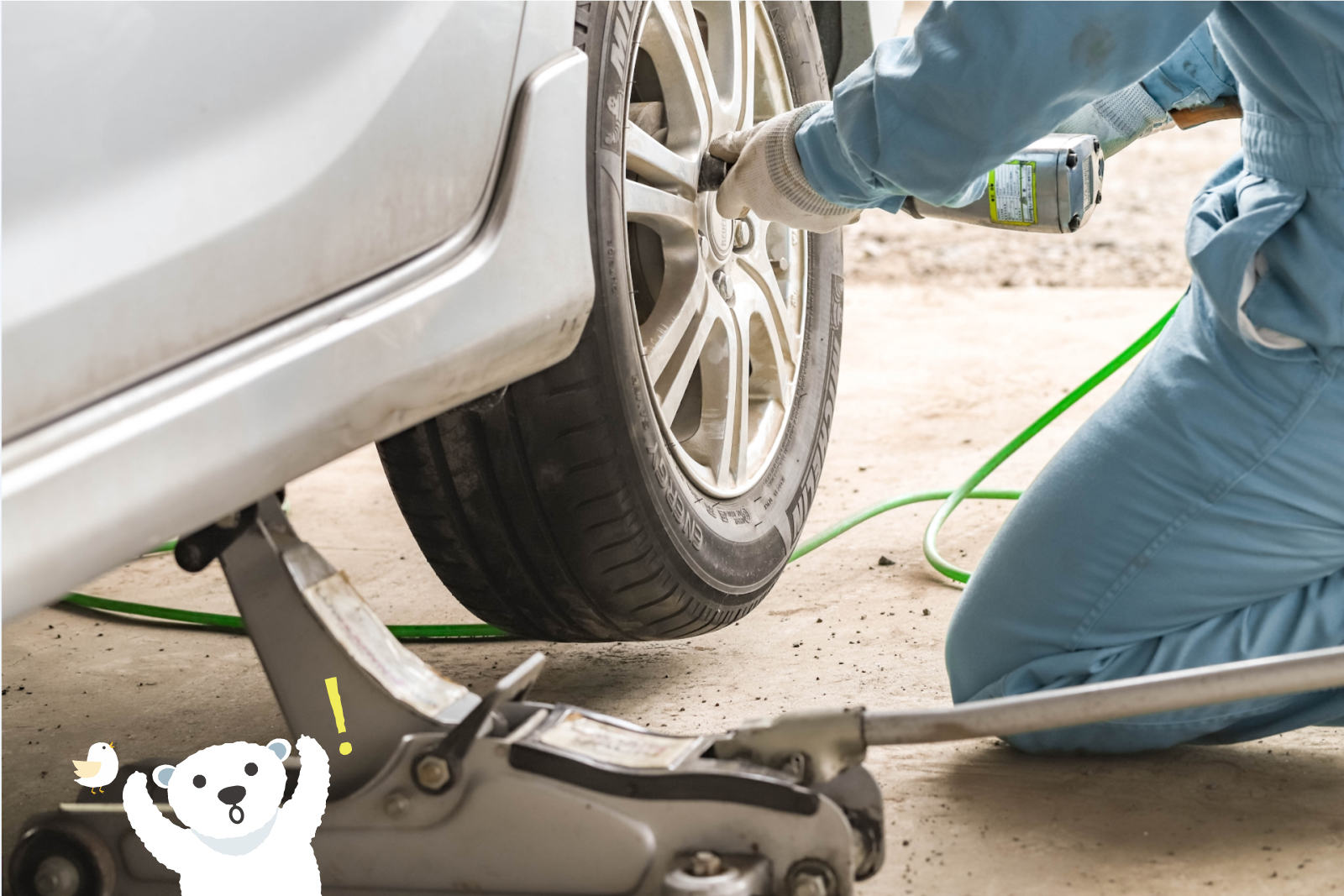
Once the snow has properly accumulated, a couple runs by cars will cause the road to freeze and glisten to what some call olympic-grade ice rink quality. Not only do drivers need to be cautious when slowing down and turn, they must change out their tires to the proper snow tires to drive safely. Many people who come to Hokkaido just before the snow season will often see signs all over reminding drivers to switch out their tires before the snow hits. For those unfamiliar, snow tires have deeper grooves than all-season tires and provide more traction, and are softer, to prevent them from hardening in cold temperatures. Snow tires are crucial to winter driving and are even more important that all wheel drive, since they are the last contact point with the ground. Some people may have also heard of snow chains from other regions, but generally on the highway and in the metropolitan areas like Sapporo, due to regular snow removal, chains are unnecessary, and in fact may damage the tarmac below if there isn’t a lot of snow on the road. In general, snow tires are adequate for winter driving, though for those heading to the countryside or mountains may want to check in with the rental company about snow chains.
5.
Icicles and falling snow oh my!
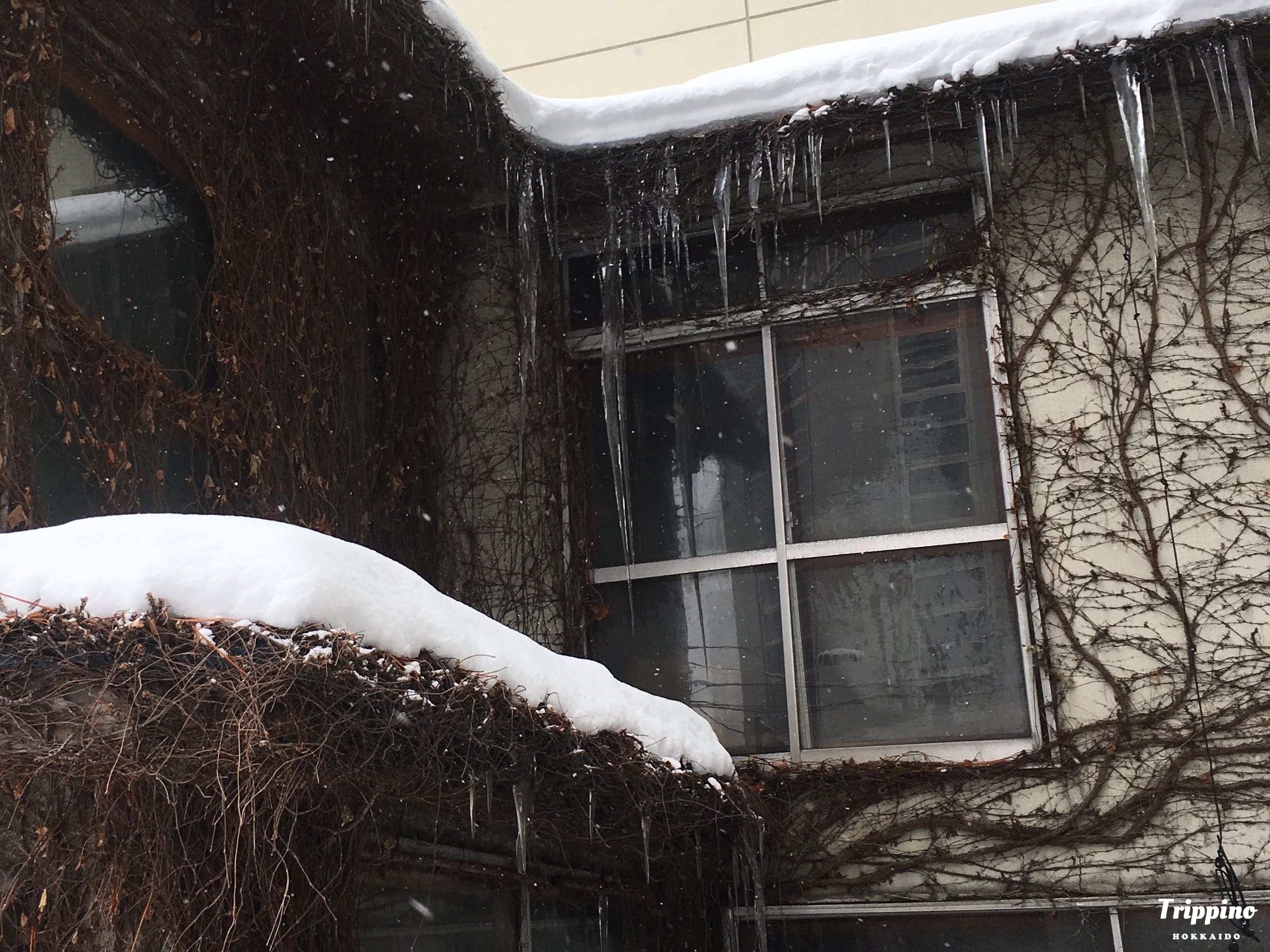
Walking in winter, some people may notice signs about falling snow. In fact, every year, there are cases where people get sent to the hospital due to falling snow or icicles from the roofs of buildings. Due to the change in temperature from sun sun during the day, some of the snow melts and drips down the form icicles as the temperature dips below freezing at night. There really is a chance of icicles falling from above, like a game! With that in mind, it is recommended that when walking outside, to keep a certain distance from the outside walls of a building. While the ground is slippery and you may be tempted to look at your feet, be sure to look up every once in a while for lurking danger~
6.
You’re walking on thin ice, really!
In addition to falling snow and icicles, slipping and falling is another common accident here in Hokkaido. As such, there are often boxes on the side of the road for with sandbags for pedestrians. The sandbags are usually placed at the corners of the intersection and are free to used. The sand, which is closer to grit, is sprinkled on the icy roads to increase traction and the leftover plastic bags can be placed back in the box for recycling. At large intersections, sometimes you can spot the sand squad shovelling the grit on the road to prevent traffic accidents from slipping vehicles. Even prospective students of Hokkaido University receive mini sandbags to prevent them from slipping on the way to the testing facility, but to also not “slip” out of the school they’re applying to.
7.
Live the mole life and make use of subway and walkway
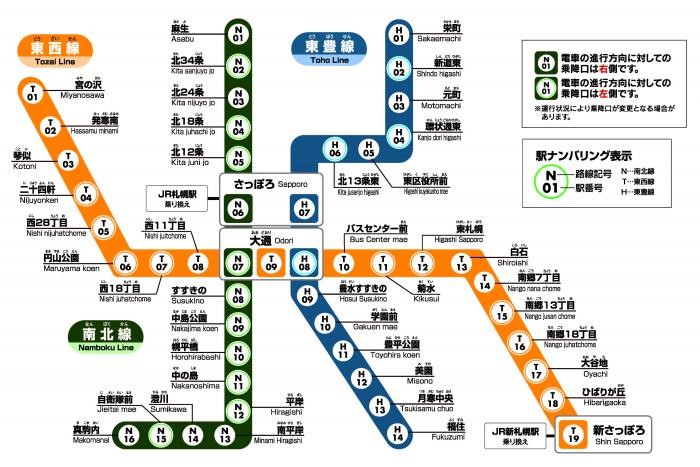
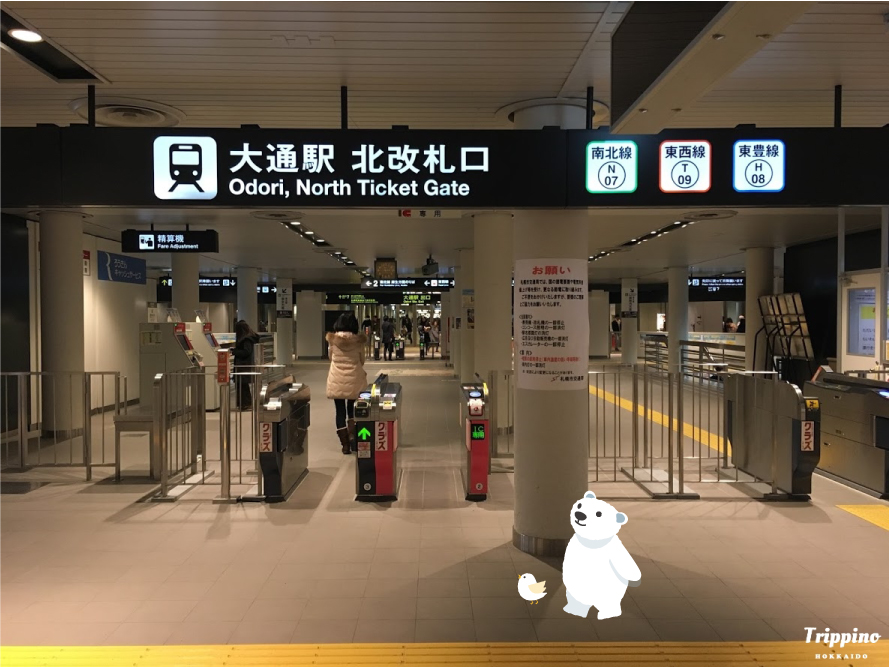
Sapporo is the most populated city and Hokkaido, and this city has one trick up its sleeve to deal with the snow: the underground network! In addition to the subway, Sapporo features many underground walkways, including the longest underground walkway in Japan, stretching nearly 2 kms from Sapporo station, passing through Odori, and ending at Susukino. In addition, there are plenty of branches from the main walkway that directly connect to various office buildings and department stores. Even if there’s a blizzard above ground, Sapporo residents can get around in safety and enjoy shopping and other entertainments in the warm underground.
8.
Leave the stroller and pick up a sled!

An all too familiar situation for those who have travelled in snowy regions, the dilemma of dragging around a heavy suitcase on snowy roads while walking! Not only suitcases, another wheeled object that you definitely won’t see in the winter of Hokkaido are baby strollers. Instead, what you’ll encounter all over town are toddlers and children being pulled in sleds by their parents. How adorable! I wish someone would pull me along as well…According to some locals, sometimes it’s common to not only replace baby carriages, but also pushcarts, for transporting heavy cargo. While the sled may seem like a fun pastime for kids, it plays an integral role for the daily lives of people in Hokkaido.
Next time you’re in Hokkaido, you’ll be a little more used to the everyday life in winter, and maybe you’ll be able to help some along the way! Even if all the tips don’t apply to you, I hope you learned all more about the interesting ways people utilize to cope with winter. Share some of these tips with your friends so you can focusing on enjoying your trip in Hokkaido!
・
Discover Cool Things!
Trippino HOKKAIDO
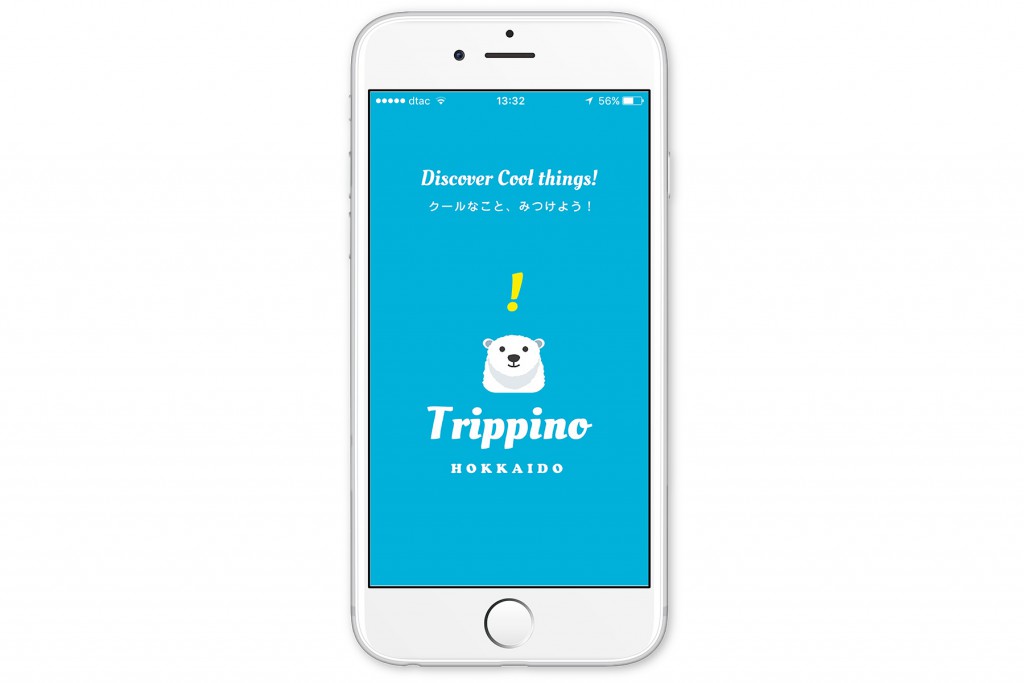
APP DOWNLOAD:
iOS : http://goo.gl/Qf5daP
Android : http://goo.gl/AxcjHG
LATEST
Jun. 25 2025


